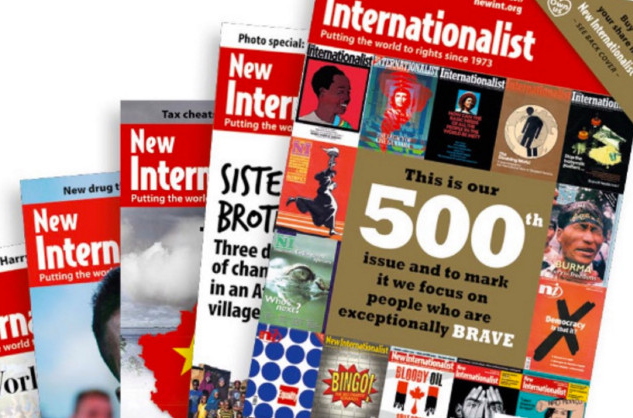Salvadoran health care workers battle privatization.
Published in the January/February 2003 edition of the New Internationalist.
For weeks at the end of last year, the streets of San Salvador—capital of El Salvador—were covered in white. Since September 2002 doctors and medical workers in the country’s social-security healthcare system went on strike to protest government moves to turn over services run at public facilities to private contractors. Demonstrations drew as many as 200,000 people, who dressed to match the uniforms of doctors and nurses.
These escalating ‘White Marches’ forced a remarkable reversal of the economic agenda promoted by President Francisco Flores’s ruling ARENA party. A new law passed on 14 November 2002 – Decree 1024 – guarantees the maintenance of national health care as part of the Social Security system. Moreover, it effectively voids contracts with private businesses that the government had rushed to put in place since the beginning of the strike.
Over the previous two months, health care union members shut down many of the country’s largest hospitals. Yet even amidst the daily demonstrations, President Flores presented a new voucher plan proposing to transfer public money to private health care providers. Union leader Ricardo Monge dubbed the proposal ‘Pay or Die.’
As marches grew in size, doctors from other branches of the public healthcare system undertook one-day solidarity strikes in hospitals across the country. A thousand students occupied buildings at the National University that had been cleared for use in the Central American and Caribbean Games. And on 12 October, doctors and allies instituted 14 one-day bridge and highway blockades that brought traffic throughout the country to a standstill. Public outrage persuaded President Flores to withdraw his vouchers proposal, and the Legislative Assembly ratified the new anti-privatization laws.
The health care strike has prompted wider efforts to resist Plan Puebla Panamá (PPP) – an infrastructural development plan designed to prepare the region for the Central American Free Trade Agreement (CAFTA). On 12 November members of the STSEL electricity workers union began their own strike against the sale of public utilities. Legislators supporting the workers at least temporarily blocked a $40 million loan from the Inter-American Development Bank for a major PPP-related electrical superhighway.
Should resistance in El Salvador force the country to effectively withdraw from the regional development plan, it would provide a powerful example for other Latin American activists who oppose the US-backed Free Trade Area of the Americas. Just by passing Decree 1024, Salvadorans have defied the mandates of the IMF and presented a legislative agenda directly at odds with moves toward ‘free market’ integration.
The health care strikers are not resting on the laurels of their recent successes. Union members continue to demand that the Government reinstate fired workers with back pay and that an independent monitoring commission oversee negotiations for further reform. In December police arrested more than a dozen union leaders. Riot troops attacked several peaceful protests including a demonstration in front of San Salvador’s maternity hospital. Moreover, activists have been the target of death threats and attacks from black-masked paramilitary gangs. While the ruling ARENA party was closely linked with death squads during the war, the Government denies any present connection. However it has failed to open investigations into any of the recent human-rights abuses.
The need for continued international support does not lessen the significance of the victories already achieved. Manuel Villanueva, National Program Director of the Committee in Solidarity with the People of El Salvador, explains that ‘This strike was not about raising salaries for doctors, or about getting better benefits. The strike was to defend the right to public health care – health care for all people – against those who want the market to decide who gets services.’
‘Two economic models collided on the streets of San Salvador,’ Villanueva says. The one in white won.
